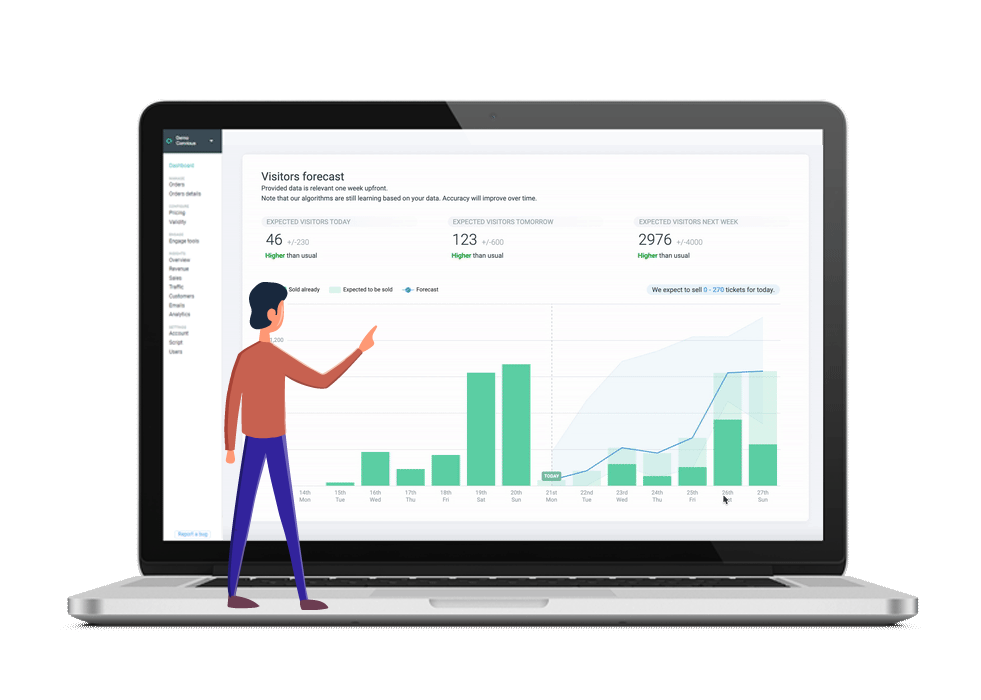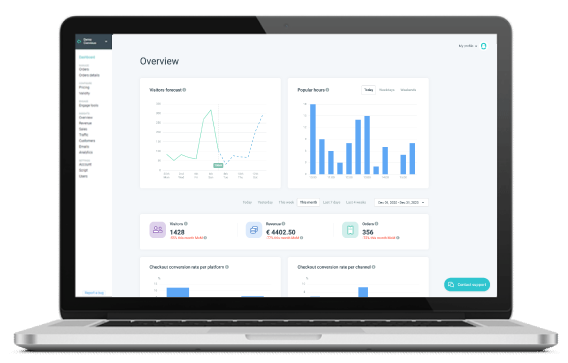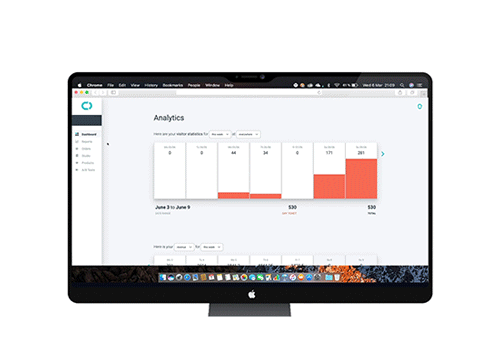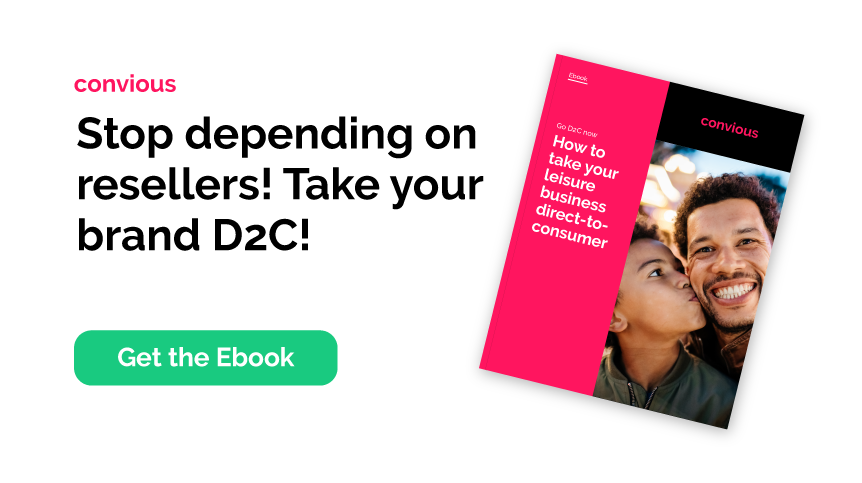Understanding different data sources and how to use them in your venue
The leisure world is undergoing busy and complicated times, and amidst the daily overwhelm of tasks and duties that leisure managers have to prioritise over, one might wonder why it is so important to allocate some time to analyse and understand different data points and sources.
Well, besides the evident and wide-spread claim that tells us 'knowledge is power', here's why:
Data acts as the fuel to help you navigate your mission
Think of data as digital feedback. It provides you with more insights into emerging trends around your venue’s guests’ behaviours and opinions than oral feedback ever could.
To make impactful decisions, well-founded feedback should always serve as the leading influence of decision-making, no matter if it's collected face-to-face or digitally. Data can help you make decisions such as whether you shift from one price to another, or whether you should design a new roller coaster over a maze, build a food court instead of a playground, or promote a certain experience package over others.
As a leisure manager, you're required to make many decisions, big and small, on a daily basis. And you can choose to base that decision-making on assumptions, or on data instead.
Feedback will always allow you to make informed and more customer-centric choices. When that feedback is gathered digitally and on a wide scale, the teeny-tiny (yet crucial) difference is that your decisions can become data-driven. Thus, increasing efficiency, pattern identification and precision, which help your decision-making outcomes be extremely well-targeted, personal, and inclusive.
However, at this point in time, this feedback is not just useful to implement a higher degree of personalisation towards your audience; but more of a necessity when it comes to meeting the current demands of customers who expect consistent and tailored experiences across all channels.
This subsumes in their digital journey, all the way from their ticket purchase on your website up to their on-site experience in your venue. One after another, we see numerous venues using their data to offer an improved experience by optimising park maps or offering upsells and push notifications via their own mobile application.
However, most leisure managers are well aware of the above. They know they should be making better use of their data's potential, but have a hard time understanding how to go about this process.
Truly understanding your data, where it comes from, how you store and use it also delivers you and your customers with a great deal of security. Why and how that is, we will demonstrate to you by explaining why now, more than ever, it matters where your data comes from.
What different types of data sources are there, and how do they differ?
There are four main types of data, and they differ in means of collection, source, accuracy, and relevancy.
1st-party data
First-party data is just as it sounds: it is collected first-hand. This means it is generally quite detailed data about your very own customers, which you generated through your own systems. This self-collected information consists of relational & transactional data, interactional, and behavioural data.
Relational & transactional data includes personal details such as those you collect to manage your customer relationships and store in your CRM systems.
Your customers' interaction with your business; this means a website visit, mobile application download, social media following, or a customer support call make up your interactional first-party data.
As the name so beautifully states, behavioural data is all about how your customers behave when interacting with your content. This might include their scrolling behaviour on your website or specific booking details, for example.
The collection of all three types of data can provide you with an extremely relevant profile of your customers.
2nd-party data
The second-party data is information that a business acquires from an external partner. Such acquired information can be quite detailed and accurate, but since another party collects it, its direct relevancy is to your business is questionable.
This third-party most likely attracts different customers, or even if you aim for the same target group and aren’t competitors, your target group will most likely perform different actions on your partners website, causing their behaviour to still be very different compared to the one on your website and thus, it is certainly not as relevant as your self-collected first-hand data.
You can still learn from this data and build a more holistic picture of your audience, but it might not be as actionable.
3rd-party data
Just like second-party data, third-party data is also collected by outside sources external to your business. In this case, however, it is bought from a collection of external parties, such as data aggregators. Considering the questions we have around relevance with second-party data, the same accounts for this aggregation of information, and worse: the big difference between the two is that this data is available to everyone out there. You can still use it, sure, but is it really what you should base your strategies and decisions on?
And before these sets of information are in your hands, you should ask yourself what you really know about its origin. Was it collected with consent? Often, there is no way to find out, which makes this endeavour quite risky.
Lastly, there is also an ethical consideration in selling and acquiring data you need to always keep in mind.
On that note, let's talk data privacy for a second.
Regarding data privacy
You can’t spell data without privacy - well, you obviously can, but you certainly shouldn’t. As we have explained in our post about why Dynamic Pricing gained our trust, customer protection (and thus, data protection) are crucial aspects of collecting and using data.
In the EU, GDPR regulations make it mandatory to ensure you meet the customer’s right to give consent, know what data you collect, provide the option to delete that data, and to compel legal action when it's misused.
Evidently, ensuring that is easier when you are the first-hand data owner and are in charge of how it is collected, used, stored, and secured. You are also in charge of getting consent, which is a crucial part of defining the data you collect and use. In essence, the bottom line here is that third-party and even second-party data sources do not deliver the same level of confidence and safety that your customers surely deserve.
Before we move on to the actionable advice of how you can seize the power of first-hand customer data, we want to let you in on what until recently was grossly disregarded but is turning into a major trend now for obvious reasons:
Meet 0-party data!
As with the other labels, this one also describes its source quite uniquely: its source is the mighty customers themselves. This data is all the information your customer explicitly wants you to collect to provide them with a better experience. An example of this is a review on your own (or external) site, which might also include personal information, intentional behaviour, and personal preferences, or even sensitive data such as political opinions.
As you might have guessed already, this is actually the safest data of them all because it is given intentionally with 100% consent. It withholds relevancy at its core but, despite its security, should not be taken as the holy grail for everything.
Because unfortunately, customers often say one thing but do another. Meaning just because a customer might say he would have bought a burger menu upfront if it would have been presented one step earlier in the buying process doesn’t mean that this will actually be the case.
In any case, first-party behaviour collected through cookies is still a safe base-line to start nurturing your hyper-personalisation and targeted strategies. The information your customers willingly give out will bring you leaps ahead in terms of further understanding your data's quality, meaning, and value, and using it to improve your whole customer experience.
How you can collect valuable data and learn to use it to its full potential
The very first step to conquering the wild waters of targeted communication is enabling first-party data collection. To do so, you must be the one collecting and gathering that valuable data, and not third-party resellers.
Otherwise, how will you access and use your data?
Once you have undergone the first step of getting your own direct channels ready, it's time to ensure your data is everything but in silos. Silos are avoided by identifying patterns and making relevant connections. You can do so by combining data from different website pages and from various systems and structuring it so you can extract meaning of it.
Think for example, about the visits to your attraction index on your website, checkout visits or upsells section. Combined, what do they say? Is there a pattern between those who viewed your attraction index and those who made a purchase, including upsells? Is it a specific segment that performs this behaviour? Maybe their scrolling behaviour can even tell you more about preferred attractions or restaurants you can push in your upsells.
However, doesn't just the thought of all that hassle give you a headache...? Digging into each of those data touch-points and fishing for insights is an incredibly time-consuming process that not many leisure managers have time for. Which is why you can hugely benefit from using a platform or software that will do this tedious work for you.
At Convious for instance, we help our leisure partners sell directly through their own channels and make the most of their data by providing them with easy-to-understand reports and insights.
Simple and digestible. No headaches.
At Convious we believe that the potential around your own data sources regarding growth and personalisation is too exceptional for you not to seize it, which is why we're such fervent advocates of the direct-to-consumer approach that relies on zero- and first-party data to drive better-informed decisions.
If you'd like to learn a little bit more on how to transform your business into a more data-driven and continuously improving venue download our free e-book below and learn how you cant start implementing a more data-driven direct-to-consumer approach in your leisure venue today!




